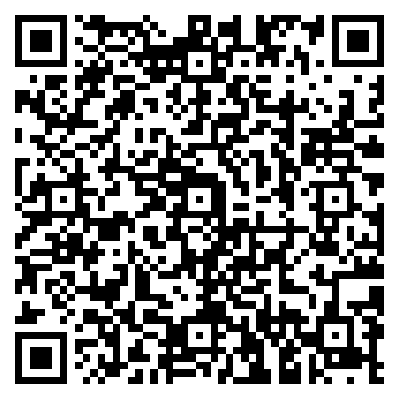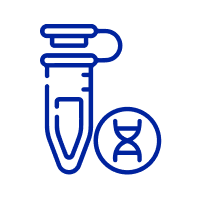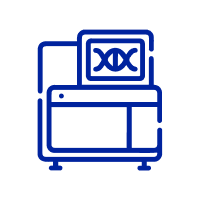

TOP


Sanger Sequencing Service
Sanger sequencing service

| Type of service | Sample type | lead time | Sample Delivery Criteria | Delivery standards |
|---|---|---|---|---|
| Sanger sequencing | Plasmids, PCR products | 1-2 working days | Concentration > 50 ng/µl, volume > 5µl/reaction, large fragment plasmids (> 10kb) please indicate length on sequencing sheet | |
| Purified PCR product | 1-2 working days | Concentration >10ng/µl, volume >5µl/reaction, electrophoretically detected bands are single and correctly sized | ||
| Unpurified PCR product | 1-2 working days | PCR product without a single band: concentration > 10ng/µl, volume > 20µl PCR product with a single band: concentration > 10ng/µl, volume > 5µl/reaction If the fragment size is < 200bp, it is recommended to sequence it after cloning; take 2µl of sample for electrophoresis to ensure that the target bands are clearly visible before sending the sample. | ||
| bacterial solution | 1-2 working days | Please fill a 1.5 ml centrifuge tube with 50 µl (not less than 30 µl) of fresh or glycerolized bacteria from the overnight culture, clearly labeled with the sample number. | ||
| plate colony | 1-2 working days | Plate colonies: Please circle and number the colonies to be measured and use a cushion to prevent breakage during transportation. | ||
| strain identification | genomic DNA | <24 samples, 7-9 business days | Concentration ≥ 50 ng/μl, total volume ≥ 10 μl; no significant degradation | PCR product electropherogram, PCR product sequencing results blast results, lab report |
| SNP detection and mutation analysis | genomic DNA | Number ≤ 15; 5 working days; each additional 15; 3 additional working days | Sample dry weight ≥0.5g, number of cultured cells ≥5*106 | PCR amplification + sequencing |
| nucleic acid sample | Number of amplifications ≤96; 4-5 working days; for each additional 96 amplifications, increase by 3 working days. | Volume ≥10µl; Concentration ≥20ng/µl; No significant degradation | ||
| Microsatellite (SSR/STR) analysis | Fluorescent PCR products | Number of running boards ≤ 5 boards, 5 working days | Volume ≥ 5µl; Concentration ≥ 20ng/µl (per electrophoresis reaction) | Running board results (.fsa file, PDF version) Results analysis file (Excel sheet) |
| genomic DNA | Amplification number ≤ 5 plates, 7-10 working days | Volume ≥ 10µl; Concentration ≥ 20ng/µl | ||
| Monoclonal Antibody Sequencing | genomic DNA | Heavy and light chain variable area sequencing: 7 business days within 24 samples | Freshly collected hybridoma cell sediment: 5×106 cells or more | Sequencing results (.ab1 & .seq) Constructed plasmid samples (optional) Antibody sequencing report |
| nucleic acid sample | Heavy and light chain variable + constant region sequencing: 10 working days within 24 samples | Total RNA: Concentration of not less than 100 ng/μl, volume of 10 μl or more, total RNA of 2 μg or more, clear bands without obvious degradation, RIN value of 7 or more. | ||
| Cell line analysis | Cellular STR identification | 5-7 working days | Genomic DNA: concentration ≥ 50 ng/μL, total volume ≥ 10 μL; and no significant degradation Cell suspension or precipitate: cell number ≥ 106 | Sequencing results (.ab1 & .seq) |
| Mycoplasma detection | 3-5 working days | Cell supernatant: cultured for 48h-72h, with cell density of at least 80% and volume ≥1ml. | ||
| cell identification | 5-7 working days | Provision of genomic DNA, cell suspension or precipitate for cellular STR identification Provision of cell supernatant for mycoplasma detection | ||
| TA clone sequencing | <800bp | working days | Sample name, fragment size, whether it was purified or not, whether the product had an A-tail or not | Sequencing results (.ab1 & .seq) |
| 800-2000bp | 7个工作日 |
Service Process

Template Preparation

Quantitative dilution

Sequencing spiking

On-line testing

Automatic interpretation of results
Service Advantages
One-stop-shop for customer-related needs
Fully automated production line
Optimal sequencing protocols for complex structures
higher quality
Free universal primers
Application Area
Question & Answer

Why did the sequencing fill out the sequencing pass 3k and the sequencing result was only about 1k?

Why is the sequencing result positive when the synthesized primer information is filled in and reverse sequencing is told?

Why must fragment lengths be filled in for PCR samples?
Service&Support
Inquiry and Ordering
Login directly to GentleGen GBSOnline Ordering System,Get quotes and place orders automatically;Download the corresponding service order form in the“Downloads”section, send an e-mail and we will provide you with a quotation as soon as possible.
If you have any questions, please contact us
